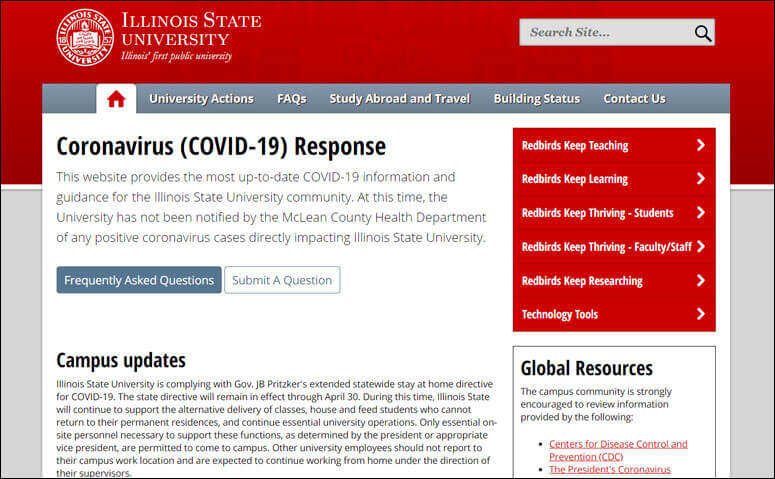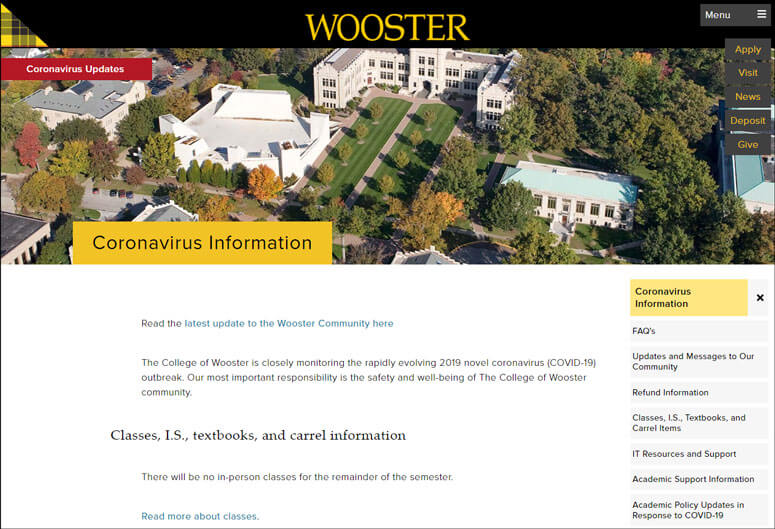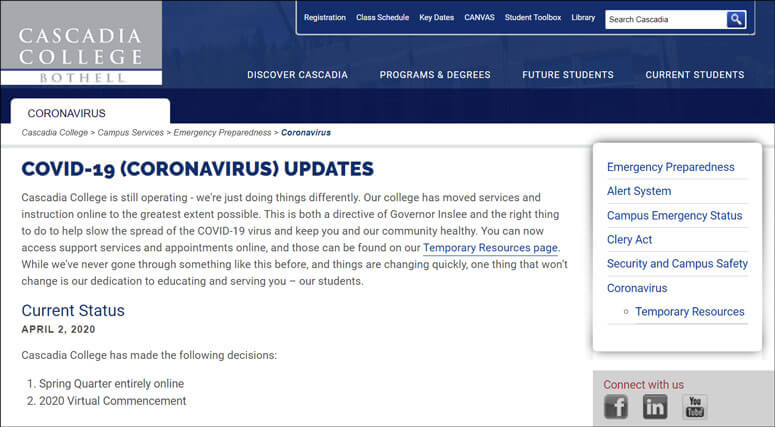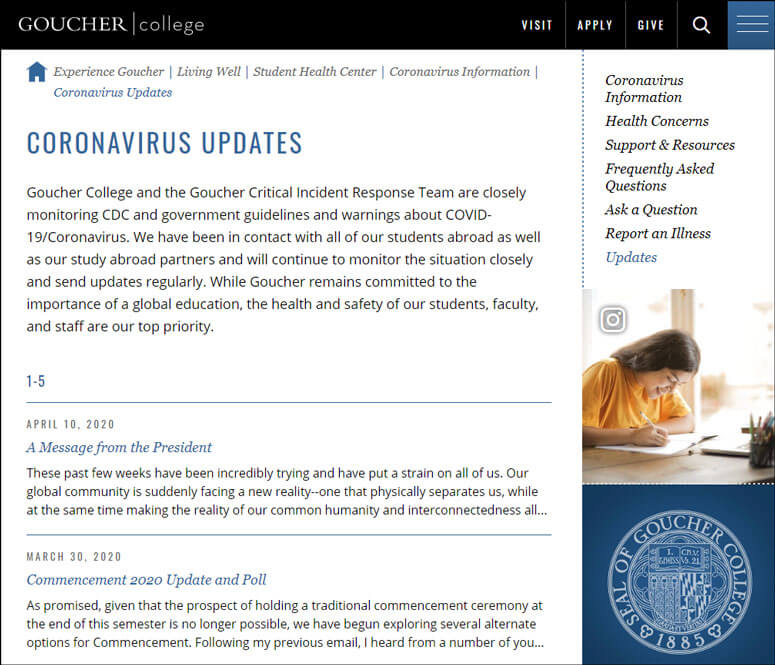5 Lessons in Crisis Messaging from Higher Ed: Schools That Do It Right
Crisis messaging has become commonplace in higher ed communications, but the coronavirus
has exposed the need to provide comprehensive, consistent, and ongoing resources to
students, faculty, and parents before, during, and after the crisis. This includes
everything from essential alerts to resources for those affected to revised academic
calendars shifted because of the crisis.
The first COVID-19 messages in higher ed were focused on closures, but iterations have become more sophisticated and all-encompassing.
Following are five lessons in crisis messaging from schools that do it right:
- Have a central page or website for all crisis information.
- Target crisis messaging to specific audiences.
- Keep crisis messaging upbeat.
- Archive all messaging for easier retrieval.
- Make it easy for students to know and understand the severity of the crisis.
1. Have a central page or website for all crisis information.
College students will naturally search your site for updates so give them the basics, but also other important notices or information related to the crisis. For example, Illinois State University created a COVID-19 update page that includes local and global resources, information about changes to class schedules, steps for prevention and treatment, technology tools, and even a frequently asked questions section to address miscellaneous concerns that students might have.

Illinois State University created a one-stop shop for all things crisis.
Image courtesy of Illinois State University.2. Target crisis messaging to specific audiences.
The College of Wooster created several crisis pages targeted to specific audiences. The student page includes information about online textbooks, dorm refunds, IT resources, and health directives—everything a student needs to know about finishing the semester, staying healthy, and preparing for what’s to come later in the year. Likewise, there are also specific pages for faculty and staff and international students who have different needs and concerns.

The College of Wooster created crisis pages targeted to specific audiences.
Image courtesy of The College of Wooster.3. Keep crisis messaging upbeat.
Crisis messaging means sharing essential, often life-or-death information with students. Yet rather than using scare tactics, Cascadia College presents their COVID-19 plan with a direct reassuring tone. They acknowledge changes by heading their page with “Cascadia College is still operating – we’re just doing things differently.” The college also shares why they have made changes, how they will keep students informed, and what they are doing to continue providing services and education to students.

The COVID-19 Cascadia College page presents essential information in a direct, reassuring tone.
Image courtesy of Cascadia College.4. Archive all messaging for easier retrieval.
As early as February 28, 2020, Goucher College began issuing alerts and updates about coronavirus. They have compiled their daily updates in a chronological archive so that students and faculty can go back and find important information as it was first reported.

Goucher College has kept a chronological archive of crisis updates so that students can go back and find important information as it was first reported.
Image courtesy of Goucher College.5. Make it easy for students to know and understand the severity of the crisis.
It’s one thing to create a page for all things crisis; it’s another to actually keep your audiences informed about the severity of the crisis. Besides the plethora of information that John Cabot University in Rome provided about campus services, prevention, and temporary resources all related to COVID-19, they also included an Modern Campus CMS Emergency Alerts banner at the top of their home page. This way, readers can assess the crisis simply by visiting the home page.

Modern Campus CMS Emergency Alerts keeps audiences informed about the severity of the crisis at John Cabot University.
Image courtesy of John Cabot University.
COVID-19 has exposed many vulnerabilities in higher ed’s crisis messaging, but this
only means that when the next crisis comes, your college or university will be ready
to meet the challenges head-on. After all, the way you handle emergencies significantly
impacts your students, faculty, and staff for better or worse.
Don’t wait until the next crisis.
Make sure your school is backed by the most powerful content management system available for higher ed. Get a demo today!
Last updated: February 5, 2021



